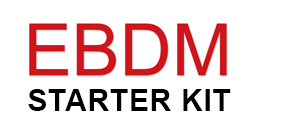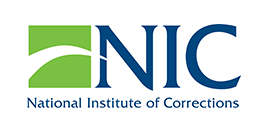EBDM Starter Kit
1o: Creating Useful Meeting Records
Navigating the Roadmap

Activity 1: Build a genuine, collaborative policy team.
Introduction
Since policymakers are busy people, designating an individual to manage and facilitate the planning process is crucial to the team’s success. Local coordinators may at times (or always) assume responsibility for facilitation and other team support responsibilities, or they may designate and/or work with others who will take on these roles.
The regular recording of meetings ensures that policy teams are as productive as possible and is the responsibility of the team staff support person (or designee). Meeting records capture essential information and remind team members what happened during a meeting, including the decisions made. Records will serve to update absent team members of the work conducted during a missed meeting, and ensure that all team members are clear about their individual assignments and the team’s next steps.
Purpose
To provide local coordinators with information and resources about how to create useful meeting records.
Participants
This document has been developed for local coordinators. Local coordinators may decide to share this information with others (e.g., a designated meeting recorder) as appropriate.
Instructions
The following are instructions for taking useful meeting minutes:1
- Record the date and time of the meeting, its purpose, attendees, and the meeting lead or chair name.
- Take notes however you feel comfortable (laptop, pen and paper, etc.).
- In your notes, provide space for filling in information during the meeting; label one section “Decisions Made” and one “Action Items.” Complete these sections as they come up during the meeting.
- Begin the record by stating the goals of the meeting. This will help frame the record.
- Do not take notes verbatim (there is no need for a transcript!); instead, provide an overview of the discussion items. Highlight the purpose of each discussion item and the salient points raised. Include decisions made and assignments (action items). For each action item that you list, record who is responsible for taking the next step and by when.
- Ask clarifying questions as needed throughout the meeting.
- After the meeting, type up (or clean up) your notes. Refer to the meeting record template in the Appendix. Make sure to
- attach, or include, a copy of the meeting goals and agenda;
- add page numbers to the document;
- write in the same tense throughout;
- remove individuals’ names from discussion points;
- add names and dates to action items;
- note at the end of the record the next meeting date(s); and
- place reference documents in an appendix or attach them to the record.
- Distribute the meeting notes as a draft document to the team. Ask team members to review the notes for accuracy and to provide any corrections to the record. Once the team approves the record, note it as a final document and circulate it again.
Tips
The following are tips for taking meeting minutes:
- Don’t worry about keeping minutes in chronological order; sometimes discussions don’t happen that way. After the meeting, you may have to reorganize some information to make the record easier to read.
- Use few adjectives and adverbs, and avoid personal observations; try to stay as objective and factual as possible.
- Break up discussions or agenda items within the meeting record for ease of review. Headings and subheadings can be a helpful way to organize a record, and the use of introductory sentences such as “Next, the team discussed its vision for its work” can help organize the flow. Underneath each heading or subheading, list bullet points that outline what was discussed and decided.
1 SMART Technologies, 2004.
Example
Ramsey County, Minnesota, Record of EBDM Policy Team Meeting
Additional Resources/Readings
CEPP. (2006). The role of facilitators and staff in supporting collaborative teams. Retrieved from http://www.collaborativejustice.org/docs
McGarry, P. (1993). Essential ingredients for success. In National Institute of Corrections, The intermediate sanctions handbook: Experiences and tools for policymakers (pp. 21–26). Retrieved from http://nicic.gov/library/000213
SMART Technologies. (2004). How to record useful meeting minutes. Retrieved from http://www.effectivemeetings.com/meetingbasics/minutes.asp
Woodward, B. (1993). Establishing and maintaining the policy team. In National Institute of Corrections, The intermediate sanctions handbook: Experiences and tools for policymakers (pp. 27–34). Retrieved from http://nicic.gov/library/000213
Appendix
PDF/Printer Friendly Version of Section

